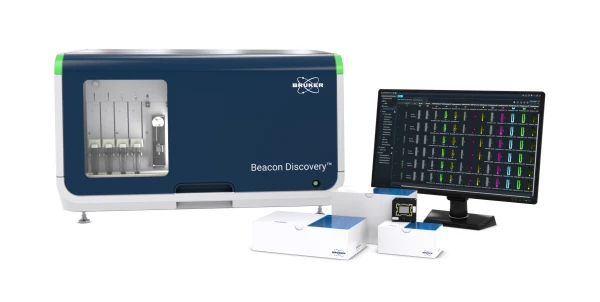The Hemp Harvest in Croptober
Time to sit back, relax, and report a few hemp-centric updates from the field
Hemp on the sustainable materials front
Hempcrete has evolved as a sustainable alternative to concrete. The material, made from hemp stalk hurds and lime, is useful as a carbon-sequestering, fibrous insulation and is completely organic. In addition, it’s been shown to be fire-resistant and act as a moisture regulator.
Hempcrete has now received approval from the International Code Council (ICC) for use in US residential construction. The approval applies to use as a non-structural wall infill system for one and two-story dwellings and townhouses. Although it’s been legal in Canada and other countries, hempcrete may now factor into sustainability efforts in US residential construction as well.
The National Hemp Growers Cooperative (NHGC) in partnership with Troy University in Alabama are pursuing a project to develop hemp fiber as biodegradable plastics. Working with the Center for Materials and Manufacturing Sciences, the NHGC aims to advance hemp plastics as an innovative alternative to petroleum-based plastics which are largely non-biodegradable.
Hemp has the potential to be blended with recycled plastics to create materials that are compatible with current specifications such as those used in automotive industry. Working with a university provides the right environment for creation of new and innovative materials and applications.
Hemp on the analytical testing front
A recent research publication looked at new methods for semi-quantitative analysis of hemp using gas chromatography coupled to mass spectrometry (GC-MS). Advancements in techniques such as GC-MS are needed to support methods for reliable identification and quantitation of low abundance cannabinoids in hemp.
The published approach is novel in several ways.
- The technique makes use of improved extraction methods that focus on trichromes, the cannabinoid rich sources of the plant. Much less starting material is needed as a result.
- Derivatization of the cannabis extract is simplified compared with previous techniques and deconvolution software can successfully identify rare cannabinoids not detected in low concentration sample prep approaches.
- The entire GC-MS workflow is sped up resulting in greater throughput and efficiency compared with previous workflows.
- The technique goes beyond cannabinoid analysis and identifies pathway intermediates, which can be useful for cultivation and biosynthesis investigations among other applications.
More complete characterization of rare cannabinoids and biosynthetic pathways may have immediate impact on the identification of compounds with therapeutic value and streamlined methods for their production.
Progress in hemp strain differentiation
Challenges in the hemp industry include reliable production and quantitation of cannabinoids. In applications where cannabis production such as CBD is the goal, strains and cultivars must reliably produce CBD throughout the growth and harvesting. Genetics and environmental conditions both play significant roles. At the same time, strains and cultivars must produce no more than 0.3% THC, or else the crop falls into illegal territory as specified by US law.
Beyond these key cannabinoids, there are many minor cannabinoids, terpenes, and phenolic compounds, which may have bioactivity alone or as secondary metabolites. These components also vary with the genetics of the plant. Despite their potential in the food and pharma industries, the profiles of these compounds (and their genetic signatures) have eluded characterization.
In a recent published study, investigators developed a two-dimensional liquid chromatography (LCxLC) method to tackle the huge complexity of the hemp matrix.
- The technique combines separation using pentafluorophenyl (PFP) with C18, in the first and second dimensions, respectively.
- The approach utilized a novel deconvolution process in which 2D raw data is transformed into 1D data, permitting statistical analysis and determination of differences between hemp strains.
- Results showed identification of up to 41 cannabinoids and 24 phenolic compounds.
Importantly these identifications formed signatures to permit differentiation between strains.
Portable hemp testing in the field and in the lab
The demand for legal, high-producing CBD strains with minimal (0.3%) THC content represents a challenge. The timing at which these levels are determined can make all the difference when it comes to resource management. There is a strong demand for testing technologies designed to allow cultivators to test plants before they are harvested and processed – to optimize CBD yields and prevent resource loss due to elevated THC content.
A recent published review looks at the various remote testing technologies that have been developed for hemp monitoring, including those incorporating biosensors and other novel capabilities. As alternatives to time-intensive techniques such as traditional HPLC, novel separations and quantitation approaches aim to use lower input volumes and produce rapid and definitive results. A major driver of these innovative approaches includes the need for remote testing without extensive reagents and workflows. Biosensor platforms born in diagnostics, pharma, food monitoring, and forensics are finding their way into the cannabis testing environment as well. A few takeaways from the review include:
- Optical biosensors which include those based on surface-enhanced Raman spectroscopy (SERS) have the advantage of being amenable to capillary sample volumes and handheld detection modes.
- Those optical methods based on fluorescence, chemiluminescence, or colorimetric sensing can be highly sensitive and accurate, through use of cannabinoid-specific antibodies. These can also be compatible with capillary handheld formats.
- Lateral flow immunoassay (LFIA) approaches can use alternative sample matrices, such as saliva and breath, in addition to plant matrices. These can excel at sensitivity and speed while being adaptable for a variety of applications beyond plant cultivation.
Summary
As the hemp industry grows and gains further momentum, focus has turned to the realities behind hemp-based sustainability and optimized hemp production. There is much progress along these fronts with novel hemp materials and advanced hemp testing platforms moving closer to widespread use.
Visit the Cannabis Laboratory Application Page









